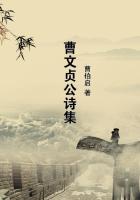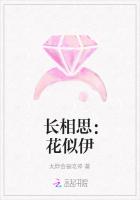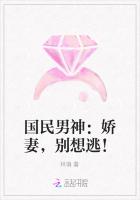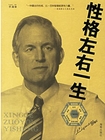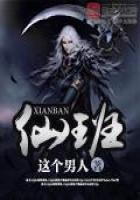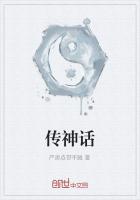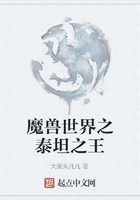Tawell was executed, and the notoriety of the case brought the telegraph into repute. Its advantages as a rapid means of conveying intelligence and detecting criminals had been signally demonstrated, and it was soon adopted on a more extensive scale.
In 1845 Wheatstone introduced two improved forms of the apparatus, namely, the 'single' and the 'double' needle instruments, in which the signals were made by the successive deflections of the needles. Of these, the single-needle instrument, requiring only one wire, is still in use.
In 1841 a difference arose between Cooke and Wheatstone as to the share of each in the honour of inventing the telegraph. The question was submitted to the arbitration of the famous engineer, Marc Isambard Brunel, on behalf of Cooke, and Professor Daniell, of King's College, the inventor of the Daniell battery, on the part of Wheatstone. They awarded to Cooke the credit of having introduced the telegraph as a useful undertaking which promised to be of national importance, and to Wheatstone that of having by his researches prepared the public to receive it. They concluded with the words: 'It is to the united labours of two gentlemen so well qualified for mutual assistance that we must attribute the rapid progress which this important invention has made during five years since they have been associated.' The decision, however vague, pronounces the needle telegraph a joint production. If it was mainly invented by Wheatstone, it was chiefly introduced by Cooke. Their respective shares in the undertaking might be compared to that of an author and his publisher, but for the fact that Cooke himself had a share in the actual work of invention.
In 1840 Wheatstone had patented an alphabetical telegraph, or, 'Wheatstone A B C instrument,' which moved with a step-by-step motion, and showed the letters of the message upon a dial. The same principle was utilised in his type-printing telegraph, patented in 1841. This was the first apparatus which printed a telegram in type. It was worked by two circuits, and as the type revolved a hammer, actuated by the current, pressed the required letter on the paper. in 1840 Wheatstone also brought out his magneto-electrical machine for generating continuous currents, and his chronoscope, for measuring minute intervals of time, which was used in determining the speed of a bullet or the passage of a star. In this apparatus an electric current actuated an electro-magnet, which noted the instant of an occurrence by means of a pencil on a moving paper. It is said to have been capable of distinguishing 1/7300 part of a second, and the time a body took to fall from a height of one inch.
The same year he was awarded the Royal Medal of the Royal Society for his explanation of binocular vision, a research which led him to construct the stereoscope. He showed that our impression of solidity is gained by the combination in the mind of two separate pictures of an object taken by both of our eyes from different points of view. Thus, in the stereoscope, an arrangement of lenses and mirrors, two photographs of the same object taken from different points are so combined as to make the object stand out with a solid aspect. Sir David Brewster improved the stereoscope by dispensing with the mirrors, and bringing it into its existing form.
The 'pseudoscope' (Wheatstone was partial to exotic forms of speech) was introduced by its professor in 1850, and is in some sort the reverse of the stereoscope, since it causes a solid object to seem hollow, and a nearer one to be farther off; thus, a bust appears to be a mask, and a tree growing outside of a window looks as if it were growing inside the room.
On November 26, 1840, he exhibited his electro-magnetic clock in the library of the Royal Society, and propounded a plan for distributing the correct time from a standard clock to a number of local timepieces. The circuits of these were to be electrified by a key or contact-maker actuated by the arbour of the standard, and their hands corrected by electro-magnetism. The following January Alexander Bain took out a patent for an electro-magnetic clock, and he subsequently charged Wheatstone with appropriating his ideas. It appears that Bain worked as a mechanist to Wheatstone from August to December, 1840, and he asserted that he had communicated the idea of an electric clock to Wheatstone during that period; but Wheatstone maintained that he had experimented in that direction during May. Bain further accused Wheatstone of stealing his idea of the electro-magnetic printing telegraph; but Wheatstone showed that the instrument was only a modification of his own electro-magnetic telegraph.
In 1843 Wheatstone communicated an important paper to the Royal Society, entitled 'An Account of Several New Processes for Determining the Constants of a Voltaic Circuit.' It contained an exposition of the well-known balance for measuring the electrical resistance of a conductor, which still goes by the name of Wheatstone's Bridge or balance, although it was first devised by Mr. S. W. Christie, of the Royal Military Academy, Woolwich, who published it in the PHILOSOPHICAL TRANSACTIONSfor 1833. The method was neglected until Wheatstone brought it into notice. His paper abounds with simple and practical formula: for the calculation of currents and resistances by the law of Ohm. He introduced a unit of resistance, namely, a foot of copper wire weighing one hundred grains, and showed how it might be applied to measure the length of wire by its resistance. He was awarded a medal for his paper by the Society. The same year he invented an apparatus which enabled the reading of a thermometer or a barometer to be registered at a distance by means of an electric contact made by the mercury. A sound telegraph, in which the signals were given by the strokes of a bell, was also patented by Cooke and Wheatstone in May of that year.

